| Srl | Item |
| 1 |
ID:
101915
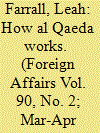

|
|
|
|
|
| Publication |
2011.
|
| Summary/Abstract |
Al Qaeda is stronger today than when it carried out the 9/11 attacks. Accounts that contend that it is on the decline treat the central al Qaeda organization separately from its subsidiaries and overlook its success in expanding its power and influence through them.
|
|
|
|
|
|
|
|
|
|
|
|
|
|
|
|
| 2 |
ID:
109836
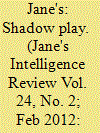

|
|
|
| 3 |
ID:
115926
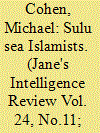

|
|
|
| 4 |
ID:
108141


|
|
|
|
|
| Publication |
Salt Lake City, USA, Springer, 2008.
|
| Description |
xviii, 288p.
|
| Standard Number |
9781402086595, hbk
|
|
|
|
|
|
|
|
|
|
|
|
Copies: C:1/I:0,R:0,Q:0
Circulation
| Accession# | Call# | Current Location | Status | Policy | Location |
| 056323 | 303.625/KAR 056323 | Main | On Shelf | General | |
|
|
|
|
| 5 |
ID:
106784
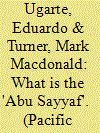

|
|
|
|
|
| Publication |
2011.
|
| Summary/Abstract |
Official sources and the media often represent the 'Abu Sayyaf' as a militant Islamist group or organization responsible for most atrocities in the southwestern Philippines. Frequently implicit within such representations is the assumption that the reported terrorist/bandit entity possesses the basic features of a conventional organization. Yet this assumption is irreconcilable with the many available descriptions of the armed groups labelled 'Abu Sayyaf' since the early 1990s. To resolve this incongruity, the article examines reigning perceptions of the 'Abu Sayyaf' in light of organization theory and network analysis. It begins with a summary of conventional definitions of organizations, before identifying alternative conceptual aids useful for understanding the phenomenon known as the 'Abu Sayyaf'. It then teases out the presuppositions that underpin popular views of the phenomenon through a sample of early military and rebel depictions. It compares those presuppositions with the structural features of the armed coalitions involved in two mass kidnappings attributed to the 'Abu Sayyaf'. The remainder of the article analyzes the 'Abu Sayyaf' in terms of 'dark' or illegal networks and supporting concepts from organization theory. To dispel the confusion surrounding the phenomenon, the article reviews the genealogy of the 'Abu Sayyaf' label in order to reveal the circumstances that gave birth to the perception of it as being a coherent group or organization. The article concludes with a brief ideal-typical interpretation of the covert networks in which the armed groups branded 'Abu Sayyaf' have been and continue to be enmeshed.
|
|
|
|
|
|
|
|
|
|
|
|
|
|
|
|
| 6 |
ID:
103511
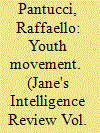

|
|
|